
Logbook of an Ambassador

China gets serious in the Indian Ocean
For India’s prestige and strategic image, the so-called Doklam standoff last year ended in a tactical advantage. Chinese troops and road construction teams had to withdraw from a contested corner at the Bhutan-China border. See our column of August 2017. Since, Indian armed forces have seemed to be able and willing to oppose Chinese attempts to challenge the common border in the Himalayans.
Read more
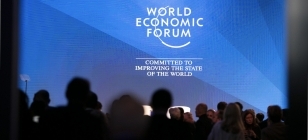
India’s Prime Minister Modi at the World Economic Forum in Davos
PM Modi was this year’s opening key note speaker at the WEF in Davos. You would have to go back 21 years to see the Indian Prime Minister come to Davos with a big government and business delegation.
Read more
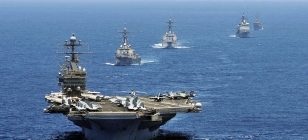
The new “Indo-Pacific Region”: What is in it for India?
It was an Indian naval officer who coined the term “Indo-Pacific” in 2007. Now, US Government officials have switched to the term as a replacement for “Asia” or the usual “Asia-Pacific”. In most recent statements by the US President himself, it has systematically become the exclusive strategic term for “Asia-Pacific”.
Read more
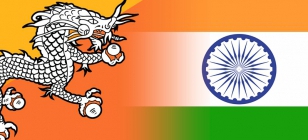
When India meets China in Bhutan: the Doklam standoff
For a few weeks, India and China were engaged in a standoff in a remote Himalayan Valley on the border of China and Bhutan, the Doklam plateau claimed by Bhutan and China. Indian forces went there to prevent the Chinese from going on building a road on Bhutanese territory, as Indians and Bhutanese see it, while the Chinese claim to be building the road on Chinese territory. The least one has to acknowledge is that sovereign rights over that Himalayan corner are contested.
Read more

Does China’s new “Silk Road” matter for India?
China’s deep sea ports in Myanmar, Sri Lanka and Gwadar in Pakistan have been considered by international strategists as expression of China’s desire to protect its international trade routes through the Indian Ocean. Among Indian strategists those ports are seen as elements of scaring “strings of pearls” encircling India. Eminent Indian Government Officials, however, deny the existence of such Chinese threats to Indian strategic interests. Nevertheless, India has sought a new partnership with Iran and concluded an agreement to develop the port of Chabahar in Iran’s South-East, in order to build its own trade route through Iran to Central Asia and thus bypassing Pakistan.
Read more
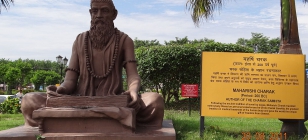
Prime Minister Modi’s policies of “Indianness”: the case of internationalising Ayurveda
Narendra Modi was elected, three years ago, against his anti-Muslim bias. His promise was to develop India’s economy by continuing the transformation from the old socialism to more market economy and against old bureaucracy and corruption associated with decade-old rule by the Gandhi family. It implied unchanged secularism. So, there was hope that Modi’s reputation of being a Hindu nationalist with strong Hindu-religious inclinations, would become part of the past. Modi’s first steps in foreign relations went in the right direction: a fresh and sober view on India’s authentic strategic interests and moves towards new international alliances.
Read more

The new US-Administration, Mexico, China and … India
The new US-President won the presidential campaign with anti-Mexico and anti-China rhetoric. By cancelling NAFTA, the free trade treaty among North American nations, he has started to redefine America’s neighbourhood policies. Mexico and Canada have good reasons to expect a rather unfriendly, if not hostile future for their continental relationships. The emblematic “beautiful wall” to be built by the United States against illegal immigration from Mexico will, once built, certainly make trans-border migration more difficult.
Read more

China, India: Who is bigger? A statistical experiment
It is common knowledge that China with its 1,35 billion inhabitants has the largest population in the world, while India ranks second with some 1,25 billion. It is also often stated, especially in India, that India with its higher population growth will overtake China by the year 2023. All figures and dates are approximate. It is a well-known sphere of competition between the two Asian giants, who are, with this respect, also global giants.
Read more
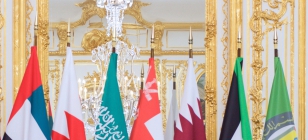
India and the Persian Gulf: a region of growing competition with Pakistan
The Persian Gulf has become a key priority of Prime Minister Modi’s active outreach in the country’s foreign relations. With that, India joins its arch-enemy Pakistan as competitor in a region of growing importance for both. The competition is strategic and economic and will, in the long run, change the power equation between the countries of the region, in particular the fundamental antagonism between Saudi Arabia and Iran.
Read more
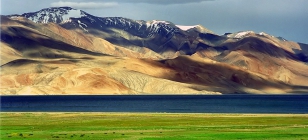
Terrorism: Whom does India fear?
According to international media headlines, terrorism seems to hit everywhere and every day. In some places, the threat is new, in other places terrorism has been around for decades. India, too, is not spared of terrorism. India has been plagued for years, and still is, by domestic terrorism, the Maoist Naxalites, initially possibly inspired by China, continuously sustained by domestically grown social injustices. In certain areas, local unrest against state authorities is seen and treated by authorities as terrorism.
Read more
